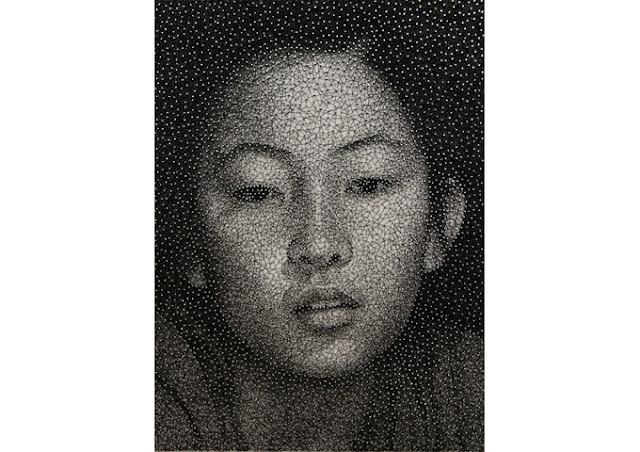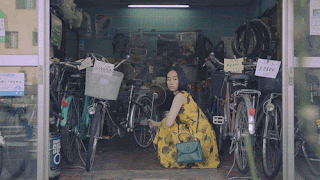Suitcase Body is Missing Woman by Eva Weinmayr
Friday, October 19, 2012
Thursday, October 18, 2012
Artist: Jessica Drenk
Jessica Drenk creates sculptural and installation work out of a variety of materials, but I really love these two pieces, made from cut up books and wax. The material and the form match up perfectly on the topic of information/knowledge--the first coming from a cataloguing specimens/artifacts angle, the second, from a brain-mapping angle.
I've been branching into some installation pieces, and have a growing appreciation for the tactile quality of a work. Also, I've always loved large-scale pieces (even just canvas paintings) because of their overwhelming presence in a space.
...aand of course I like organic/amorphous forms--what else is new? I see a lot of similarities between the second piece and Charles Clary's work (which I talked about in an earlier post).
Artist: Christine Wu
Christine Wu is based in LA, and creates art around what she describes as "people in flux". The echoing is frankly just beautiful--and it works in both the drawings and the paintings.
(I've seen people try to achieve this idea in paint before and have it not really turn out right--something is always off either with the transparency or the fluidity of the composition)
Artist: Kumi Yamashita
I posted one of her works on here previously, but I'm going to do some more of her work because she has a few really interesting series.
(two sidenotes: first, I love her website layout, and am basically trying to emulate that for mine... and second, I notice that the last 3 artists I've posted are Japanese--and looking closer, I think there is a common thread of subtlety and ambiguity in all of their work that I like)
(two sidenotes: first, I love her website layout, and am basically trying to emulate that for mine... and second, I notice that the last 3 artists I've posted are Japanese--and looking closer, I think there is a common thread of subtlety and ambiguity in all of their work that I like)
She has a few different series of portraits (using different techniques/materials), but they are all sort of born out of repetitive processes that come together to form a picture.
Her light/shadow pieces are great (it's one of those ideas where I wish I had thought of it). The end result is clean and simple, but I can imagine how much time something like that takes to get just right.
Artist: Rrrrrrrroll
The .gif format is very pervasive on the internet right now, and on tumblr especially, but I like how this group pushes it past its normal uses (animating 2-frame self-shots and isolating video clips from shows).
They have given themselves constraints--circular motion and the same model--but continue to generate interesting takes on it. I have spent some much time just watching these gifs loop, trying to deconstruct how they did some of them (like the spaghetti one).
Thursday, October 11, 2012
Artist: Shinichi Maruyama
Even though I don't work in photography, this work interests me for the same reasons as (previously posted) Clary's and Nares' works: organic/amorphous forms and motion. Also, containing the subject within the frame, which was always something that highschool art tried to get me to stop ('fill the page', 'touch the edges so that the eye moves across the composition', and all that).
Artist: James Nares
James Nares creates large scale oil paintings with these wide brushes (you can see himself working below, suspended above the canvas). What first drew me to his work was the organic forms, the sense of motion, and how the depth of the form contrasts with the negative space backgrounds. When I found out about his process, his work ended up resonating even more with me.
Some of the ideas I've been pursuing in my own work (sort of starting with my small-scale pen drawings last year) have to do with how repetition of process doesn't just replicate. When you put the same materials/constraints (for Nares, oil paint, a brush, canvas, suspension, and a certain type of form he is trying to achieve) through the same processor (the artist) over and over, you end up with a series of work that is all different.
It's very calligraphic, and in the same way as calligraphy, it has to happen all in motion--you can't go back in with smaller brushes to touch up, otherwise it just ends up looking stilted and wrong.
Subscribe to:
Comments (Atom)




























